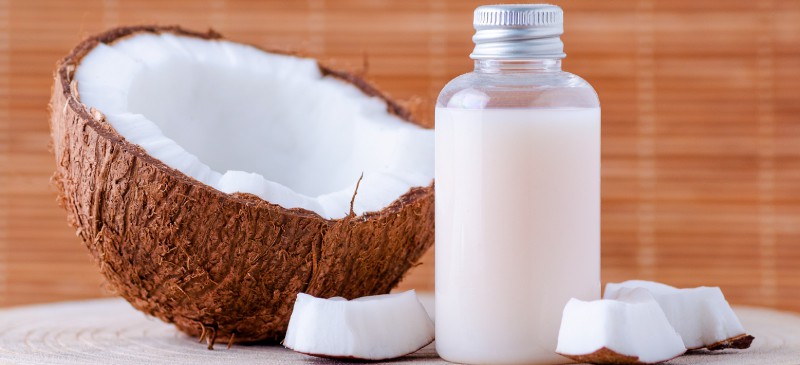This Dr. Axe content is medically reviewed or fact checked to ensure factually accurate information.
With strict editorial sourcing guidelines, we only link to academic research institutions, reputable media sites and, when research is available, medically peer-reviewed studies. Note that the numbers in parentheses (1, 2, etc.) are clickable links to these studies.
The information in our articles is NOT intended to replace a one-on-one relationship with a qualified health care professional and is not intended as medical advice.
This article is based on scientific evidence, written by experts and fact checked by our trained editorial staff. Note that the numbers in parentheses (1, 2, etc.) are clickable links to medically peer-reviewed studies.
Our team includes licensed nutritionists and dietitians, certified health education specialists, as well as certified strength and conditioning specialists, personal trainers and corrective exercise specialists. Our team aims to be not only thorough with its research, but also objective and unbiased.
The information in our articles is NOT intended to replace a one-on-one relationship with a qualified health care professional and is not intended as medical advice.
Homemade Anti-Dandruff Shampoo with Coconut Milk
February 3, 2022

No one wants to be embarrassed by those white flakes of dandruff that land on their beautiful black jacket, but it happens because it almost seems like an unsolvable mystery about how to get rid of dandruff. In large part, it’s because most of the so-called dandruff shampoos, while also full of chemicals and unhealthy ingredients, simply do not work very well. And if they do, it’s only in the short-term.
Fortunately, finding an anti-dandruff shampoo solution that works for you may not be as difficult as you think, if you’re willing to do it yourself! But first, let’s explore why shampoos may or may not work so that you can make smart choices.
What Is Dandruff?
Dandruff, medically known as pityriasis capitis or seborrheic dermatitis confined to the scalp, is a disease that has been around for centuries despite the numerous treatments available. New anti-dandruff products frequent the market, almost daily, perhaps due to the widespread increase in the incidence.
However, dermatologists have given little attention to this problem. Why is it so difficult to fight off this humiliating dandruff?
Unfortunately, this nagging scalp disorder is rather common. Several studies across the world have shown a prevalence of dandruff of up to 50 percent in the general population. You would think that with such a large number, solutions would be available. However, due to these chemicals that are found in most commercially bought shampoos, their effectiveness may be temporary.
The word itself has negative meaning having a combination of ‘tan’ meaning ‘tetter’ and ‘drof’ meaning ‘dirty.’ So, it makes sense that having the right shampoo should help. And while the real cause of dandruff is yet to be understood, there are some things you can do to ease the cringe-making effects they offer.
Getting the anti-dandruff shampoo right is key. We know that most body and hair products out there have tons of toxic chemicals, and these chemicals can be incredibly ineffective, too. It is confusing as to why these toxic chemicals in shampoos are even allowed to hit the shelves, knowing that they can negatively affect our hormones and potentially even cause sickness. It’s probably no surprise that cosmetics has grown into a $50 billion dollar industry.
How to Make A DIY Dandruff Shampoo
To avoid this seemingly uncontrollable situation, you can simply make your very own anti-dandruff shampoo right at home with just a few ingredients. Keep in mind that the dandruff comes from the scalp, not your hair. That means it is important to gently massage this DIY dandruff remedy into the scalp as well as thoroughly washing your hair.
Fortunately, this recipe not only includes several dandruff-fighting ingredients, it’s also gentle enough to use several times a week.
Let’s start with your mixing bowl and a whisk. Combine the coconut milk, coconut oil and castile soap to start. Nutrition-rich coconut milk and fractionated coconut oil will help provide much needed nutrition for your hair and scalp. This nutrition will help build up the immune defenses as well as moisturize the hair and scalp.
Castile soap is a gentle vegetable-based soap derived from olive oil, water and lye that is biodegradable and non-toxic. While castile soap is gentle, it can help cleanse the scalp of excess sebum and product build-up.
Once the coconut milk, coconut oil and castile soap is well blended, add the water, apple cider vinegar and baking soda. It is a good idea to use purified water, such as an authentic spring water, to help avoid chemicals. The apple cider vinegar is great for eliminating the fungus and bacteria because it contains powerful enzymes. The baking soda can help slough off the dead skin due to its abrasive texture by acting as a mild exfoliate and fungicide.
Now, add the rosemary and tea tree oil. The rosemary oil will provide a nice scent and much more. Because dandruff is caused by fungi, it’s important to choose ingredients that can inhibit this fungi. That is why I chose rosemary and tea tree oil. Rosemary and tea tree oil essential oils contain antifungal properties, and you may get the added benefit of hair thickening that these oils can provide!
And now for my favorite ingredient, fenugreek! Fenugreek is a plant most commonly used as a spice in Indian cuisine; however, fenugreek can do wonders for your hair and scalp. Fenugreek seeds have a composition that is rich in protein and amino acids. These nutrient-dense characteristics encouraging healthy hair, hair growth and can help ward off those disgusting flakes of dandruff.
In particular, fenugreek has a high concentration of lecithin, which is a natural emollient. This emollient can help make hair stronger overall and provides many users of fenugreek with silky and soft locks.
Make sure all ingredients are thoroughly blended. Pour the mixture into a BPA free shampoo-like container with a lid, or you may use a glass jar if you prefer.
How to Use
To use, simply wet the hair as you normally would for shampooing. Place a small amount in the palm of your hand and begin to blend it into the hair and massage the scalp thoroughly. Leave the anti-dandruff shampoo on your scalp for a few minutes to gain the benefits of this natural remedy.
Try using every other day for best results. Shake bottle before each use. If you experience any discomfort or allergic reaction, stop using immediately. Consider doing a test patch prior to a full wash.
Refrigerate the shampoo after each use, as the coconut milk may spoil. Ideally, use within four weeks, and by then hopefully your dandruff has cleared up.
Print
Homemade Anti-Dandruff Shampoo
- Total Time: 10 minutes
- Yield: 20 uses 1x
Description
Ready in about 10 minutes, this DIY dandruff shampoo recipe not only includes several dandruff-fighting ingredients, it’s also gentle enough to use several times a week.
Ingredients
- 13 ounces (1 can) coconut milk
- 1 teaspoon fractionated coconut oil
- ½ cup liquid castile soap
- ½ cup purified water
- 1 teaspoon apple cider vinegar
- 1 teaspoon baking soda
- 20 drops rosemary essential oil
- 15 drops tea tree essential oil
- 1 tablespoon ground fenugreek seeds
- BPA-free plastic dispenser bottle
Instructions
- Get out a mixing bowl and a whisk. Combine the coconut milk, coconut oil and castile soap to start.
- Once the coconut milk, coconut oil and castile soap is well blended, add the water, apple cider vinegar and baking soda and mix.
- Add the rosemary and tea tree oil. Continue to whisk.
- Lastly, add the fenugreek and make sure all ingredients are thoroughly blended.
- Pour the mixture into a BPA-free shampoo-like container or a glass bottle with a lid.
- Use every other day. Store in the fridge after use. Use within 4 weeks.
- Prep Time: 10 min




